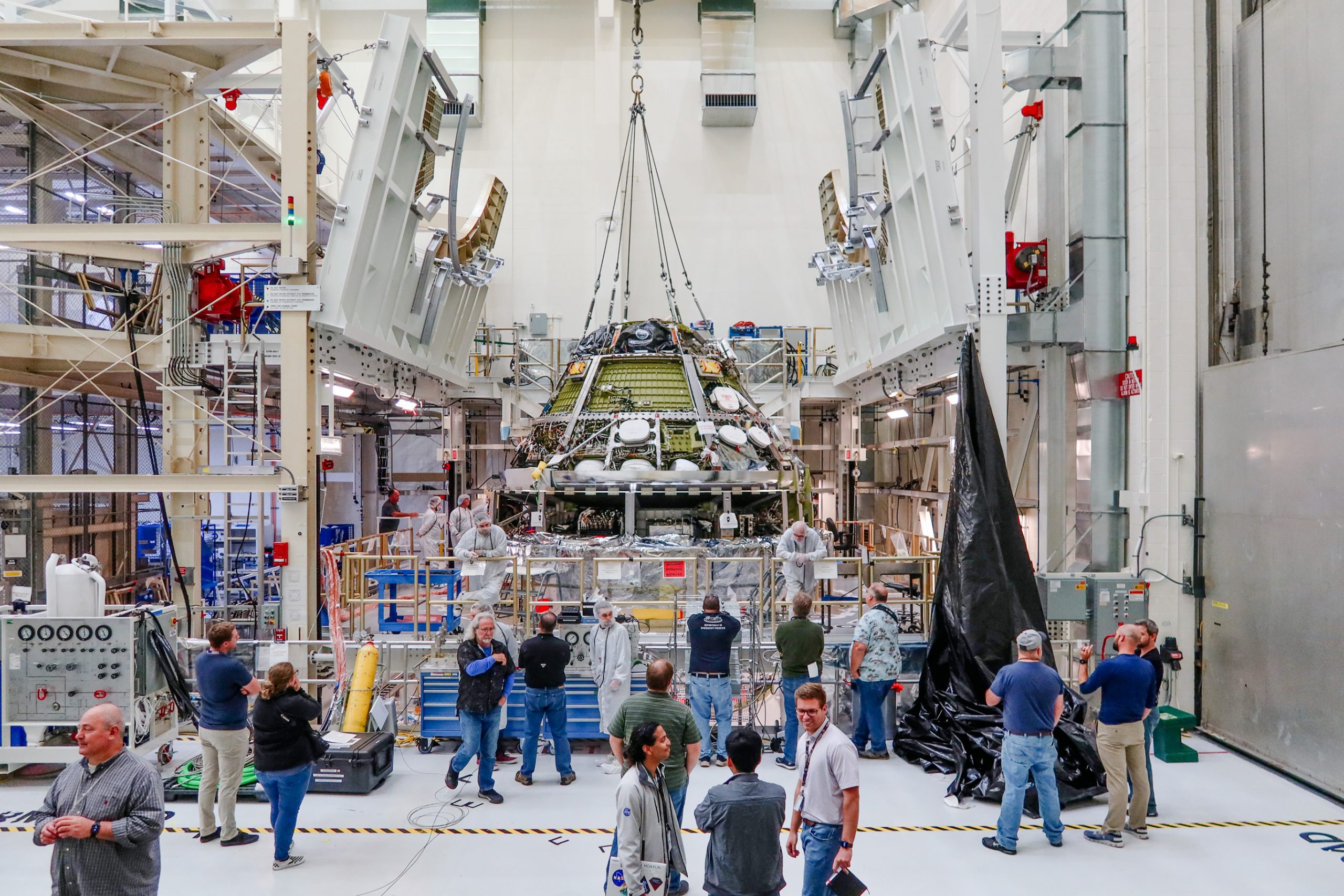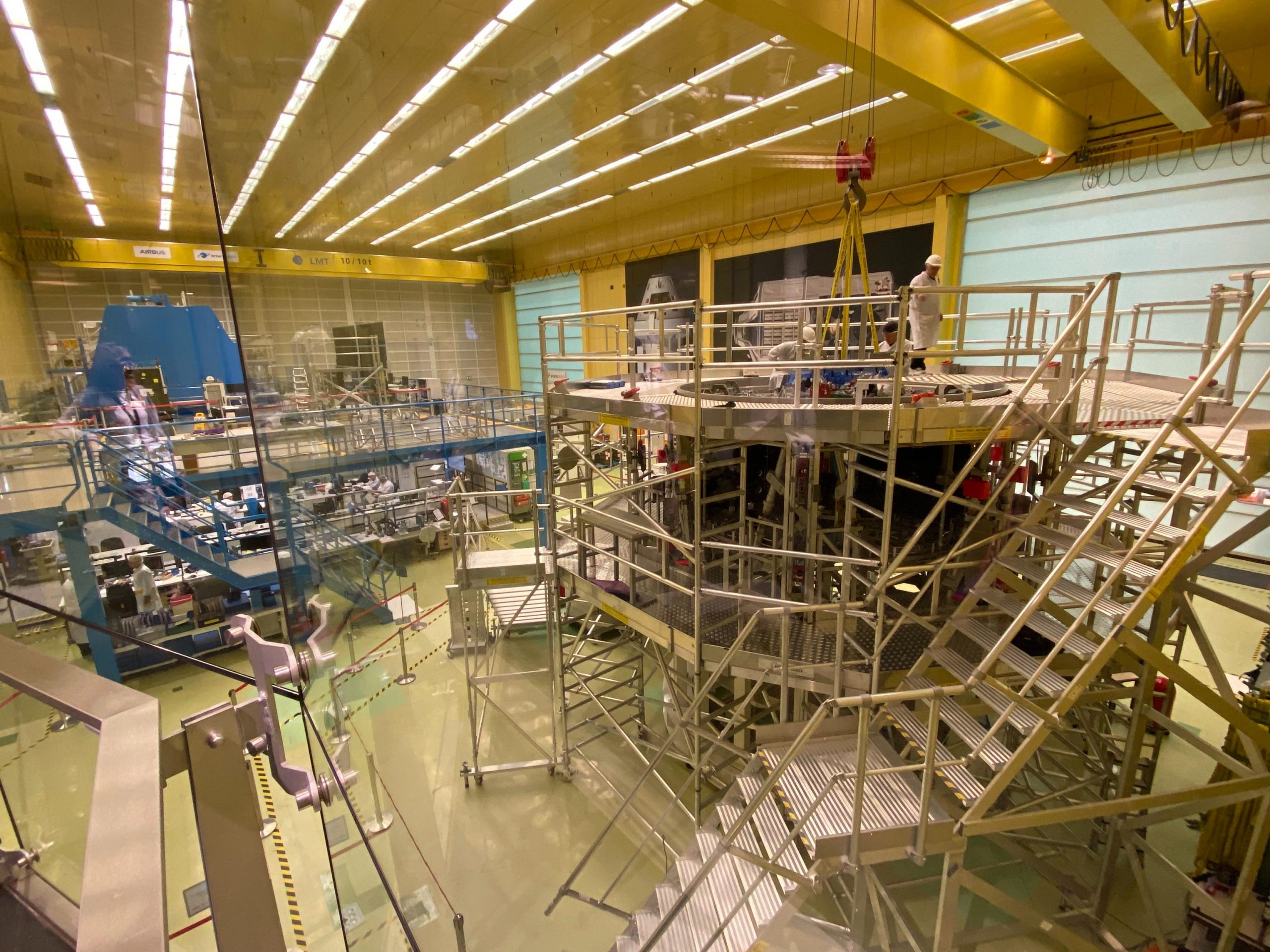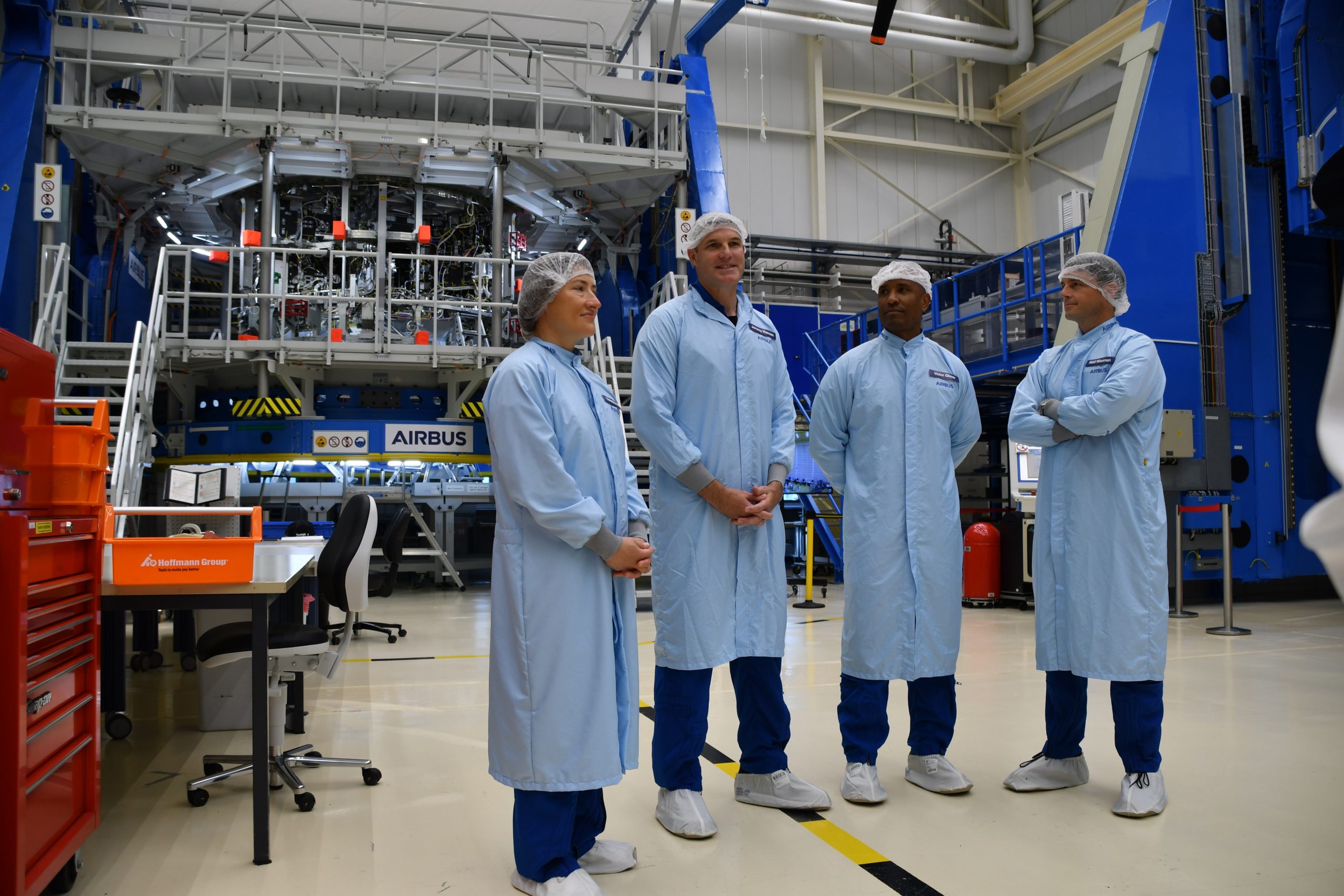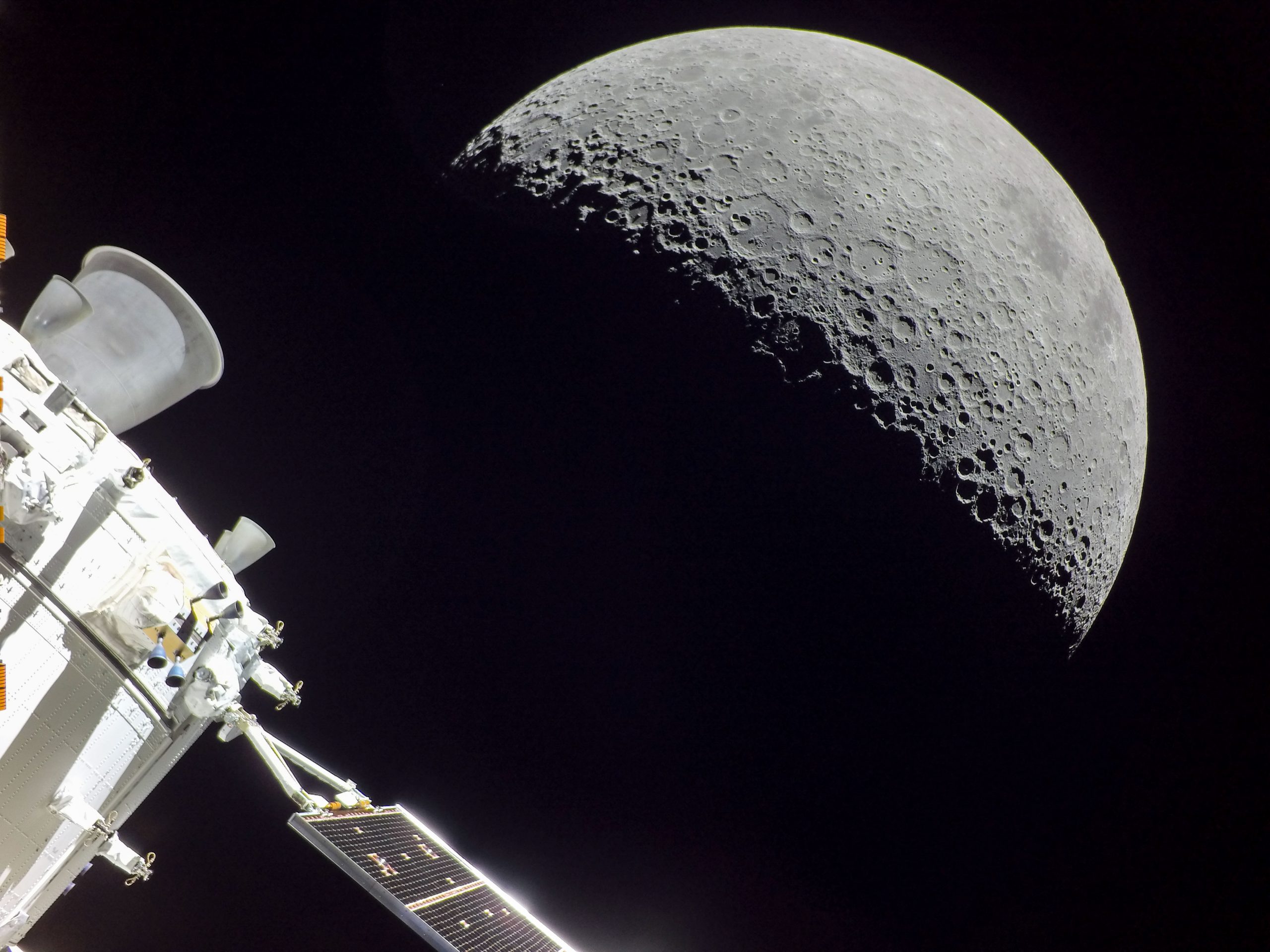As is tradition at the beginning of the year, we look back on what we have achieved in the year gone by and what we can look forward to in the new year. Without further ado, here’s a 2023 wrap-up and 2024 sneak-peek for ESA’s European Service Module powering Orion for Artemis.
2023
Post-flight analysis of Artemis I
Over a year ago, in November 2022, the Artemis I test flight saw NASA’s mega Moon rocket Space Launch System (SLS) launch the Orion vehicle into space, where it was propelled around the Moon and back, over 2.25 million km, by our first European Service Module (ESM). Orion was propelled beyond the Moon by ESM’s 33 engines, farther than any spacecraft designed to carry humans, and then returned to Earth. ESM went literally above and beyond: executing its challenging manoeuvres to a tee and generating so much extra power with its solar arrays that the engineering teams had time to use them as selfie sticks to take great mission pictures.
However, the work didn’t finish after the splashdown of Orion. Since then, our teams have been busy analysing the mission and the performance of our ESM, notably assessing an anomaly in the power unit of ESM.
Europe’s first lunar “lamb-bassador” goes on tour
European’s first woolly astronaut to fly around the Moon, Shaun the Sheep, didn’t have much time to rest once he finished his Artemis I mission. Not long after his return, Shaun was already setting off to various space centres in Europe, from the European Astronaut Centre in Cologne, Germany, where his fellow astronauts are trained for their missions, to Airbus in Bremen where the vehicle that took Shaun to the Moon and back was built. Here, Shaun was able to take a peek at the third ESM in the Airbus cleanroom, the vehicle that will power the Artemis III mission, which will bring humans back to the Moon for the first time since 1972.

Shaun at Airbus in Bremen. Credits: ESA/Aardman
ESM-2
The second European Service Module, destined for the Artemis II mission that will see four astronauts circle our Moon and return to Earth, has seen many milestones this year.
In June, ESA formally handed over ESM-2 to NASA, after integration and qualification of the module at Kennedy Space Center in Florida, USA. As Artemis II astronaut Victor Glover watched, our ESM production manager Anthony Thirkettle and NASA’s Orion programme manager Howard Hu signed the papers for the handover of the hardware.
ESM-2 was then attached to the Crew Module Adapter and has since been through rigorous testing to ensure all equipment functions correctly, communicates seamlessly with each other and can withstand the intense conditions of the launch.
The complete service module was connected to the crew module at the end of October to form the complete Orion vehicle, minus the solar wings which will be attached in 2024. Just over a week later, the Orion vehicle was powered up and teams saw that the crew and service modules communicate correctly with each other, and that ESM can distribute power to the crew module. The journey of ESM-2 continues in 2024.

The cone-shaped crew module being stacked over the service module below it at Kennedy Space Center.
Credit: NASA
Family of ESMs
Today, there are no less than four European Service Modules in production in the Airbus integration halls at Bremen: ESM-3 is finalising production and will be shipped to NASA’s Kennedy Space Center later this year; ESM-4 and ESM-5 are starting to be built as the vehicles that will bring astronauts and the first European Gateway modules to lunar orbit; and in the summer, ESM-6 was brought from its Thales Alenia Space manufacturing hall in Turin, Italy, to Airbus in Germany.

European Service Module-3 (left) and 5 (right) at the Airbus assembly hall in Bremen, Germany.
In September, the Artemis II astronauts visited the European Service Module assembly hall in the Airbus site at Bremen and saw these four modules that will supply air, water, electricity and propulsion to the Orion crew vehicle in future missions to the Moon.

Artemis II astronauts visit the European Service Module assembly hall at Airbus in Bremen, Germany. Credits: ESA-J. Harrod
Goodbye and hello
At the end of 2023, we also said goodbye to our ESM project manager, Philippe Deloo, who managed the programme at ESA since its inception in 2011. Jan-Henrik Horstmann, having already worked on the European Service Module project at Airbus, has now taken over this role at ESA.
2024
The journey of ESM-2 continues
This year will be very busy for the Orion teams. The Orion vehicle for Artemis II continues to be tested and will soon find itself in the same altitude chamber used during the Apollo missions. In the early summer, Orion will earn its solar wings, before moving to the Exploration Ground Systems to begin launch preparations ahead of the mission, now planned for 2025.
ESM-3
The third European Service Module is currently in an Airbus cleanroom in Bremen. It will make its way across the Atlantic Ocean to NASA’s Kennedy Space Center in Florida, where it will repeat ESM-2’s journey and be connected to its very own Crew Module Adapter and undergo its very own testing this summer, in preparation for Artemis III.

The Moon seen during Artemis I mission. Credits: NASA

 Automated Transfer Vehicle page
Automated Transfer Vehicle page ATV blog archive
ATV blog archive
Discussion: no comments